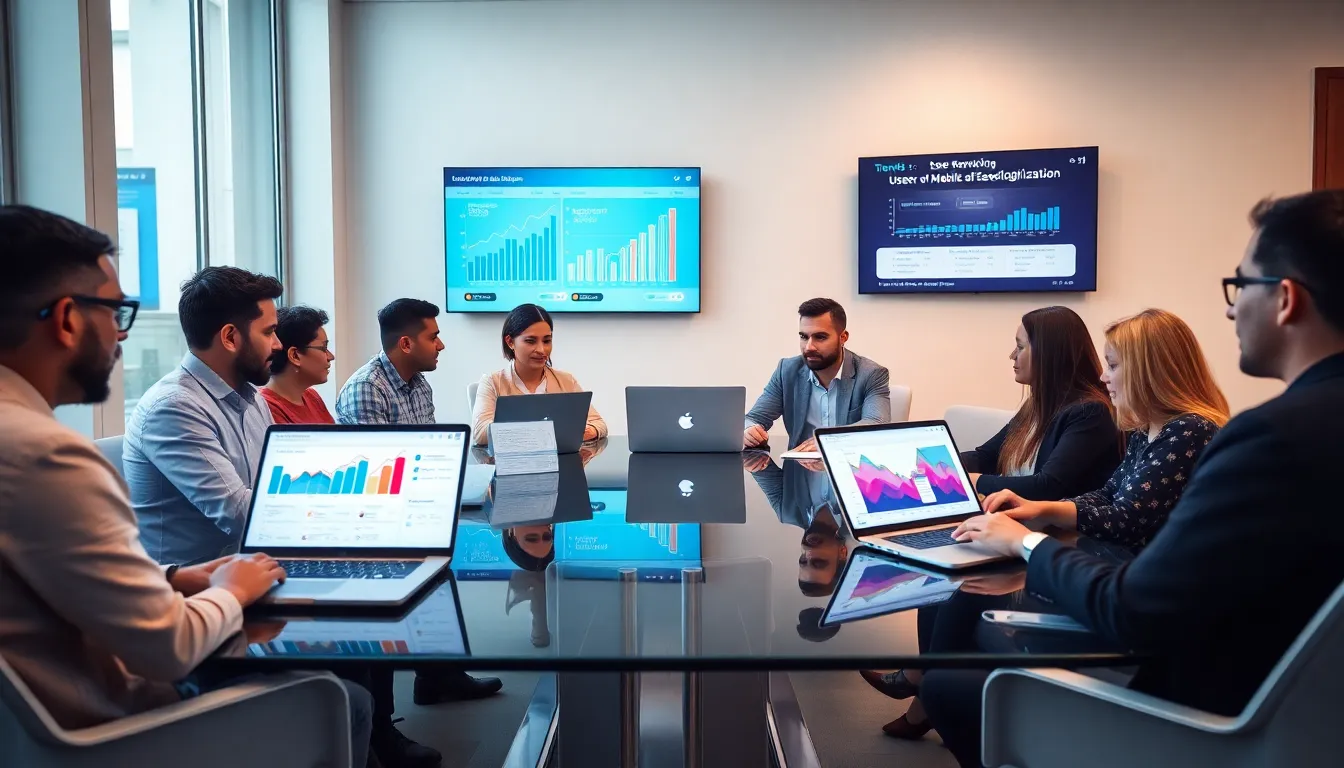In today’s wild world of technology, navigating the digital landscape can feel like trying to find a needle in a haystack. Fear not. Our journey through the industry insights at WebBizMagnet will not only enlighten your understanding but might add a chuckle or two along the way. So buckle up: you’re about to jump into a world where algorithms can become your best friends, and social media might just hold the key to unlocking your next big idea.
Table of Contents
ToggleUnderstanding the Digital Landscape

The digital landscape is evolving faster than a toddler can reach for their favorite snack. Businesses today must grasp the complexities of online environments that blend technology and consumer behavior into a seamless tapestry. What does this mean for entrepreneurs? Quite simply, they must adapt or risk becoming digital dinosaurs. Understanding the intricacies of web-based environments involves recognizing shifts in user behavior, data analytics, and the emergence of new platforms. It requires an eagle-eyed focus on consumer engagement and a willingness to pivot where necessary.
Also, the rise of mobile technology means that companies have to prioritize mobile-friendly solutions. With the majority of users accessing content via their smartphones, optimizing for mobile is no longer optional: it’s essential. WebBizMagnet encourages businesses to remain cognizant of these shifts while embracing innovative tools that enhance customer interactions across all devices.
Current Trends in Digital Marketing
Shifting gears to the latest trends in digital marketing reveals a landscape that’s both thrilling and, at times, overwhelming. Currently, storytelling reigns supreme. Audiences crave authenticity and narrative-driven content that resonates on a personal level. Forget the cold, hard sell: modern consumers want to feel connected, and brands that master this will have the upper hand.
Another vital trend is the rise of video marketing. Short-form videos, especially those on platforms like TikTok and Instagram Reels, are capturing attention like never before. They’re engaging, quick, and often lighter than your usual marketing fare. Brands tapping into this trend are likely to see a boost in engagement levels.
Finally, harnessing data-driven insights through AI and machine learning is transforming marketing strategies. From personalized content recommendations to predictive analytics, technology allows businesses to better meet customer needs and streamline their operations.
Impact of Technology on Business Models
Technology is no longer just an accessory: it’s the foundation upon which modern businesses build their structures. Many companies have redefined their business models to exploit advancements in technology, leading to enhanced efficiency and profitability.
Take, for instance, subscription-based models. Companies like Netflix and Spotify have not just survived: they’ve thrived due to their ability to provide customers with instant access to a vast array of content. This shift represents a broader trend where consumers pay for consistent value over outright ownership.
Also, remote work technology has reshaped work environments. Businesses that adapt to flexible work policies can tap into a broader talent pool and improve employee satisfaction, making technology a game-changer in workforce management.
Key Challenges Facing Businesses Today
Even though the technological advantages, businesses are not without challenges. Cybersecurity has emerged as a top concern. A data breach can be catastrophic, diminishing trust and damaging reputations. Companies must prioritize robust security measures or risk becoming the next headline.
Also, navigating compliance with the rapidly changing landscape of regulations can add stress. Privacy laws vary significantly by region, and businesses must stay informed on these updates to avoid hefty fines.
Economic fluctuations and market competition also pose significant challenges. Businesses need agile strategies to adapt to unexpected shifts in the market, meaning that flexibility isn’t just an ideal: it’s a necessity.
Opportunities for Growth and Innovation
Amid challenges, opportunities abound. Innovators are leveraging technology to create entirely new business models. For example, the rise of the gig economy presents unique avenues for growth. Companies can tap into freelance talent and market demands more fluidly than ever before.
Besides, sustainability has become more than a buzzword. Consumers increasingly favor brands that adapt eco-friendly practices, leading businesses to innovate sustainably while resonating with their audiences. This shift not only helps the planet but can also improve brand loyalty.
Collaboration will also be key. By forming partnerships and leveraging shared resources, companies can enhance their market presence and expand their reach, embracing the collaborative spirit of the modern economy.
Predicting the Future: What Lies Ahead
Looking ahead, the future of business, particularly within the digital realm, appears promising yet uncertain. The increasing integration of artificial intelligence will likely continue to pave the way for personalized experiences and operational efficiency. Companies that harness AI tools responsibly will not only survive but thrive.
Also, as remote work solidifies its place in the modern work structure, businesses must consider the long-term implications for corporate culture and employee well-being. Creating a balanced environment that promotes collaboration while respecting remote work will be crucial.
Finally, anticipating consumer demands will be vital. Businesses that adopt a customer-centric approach and stay ahead of trends will better position themselves for success in a landscape characterized by rapid change.





